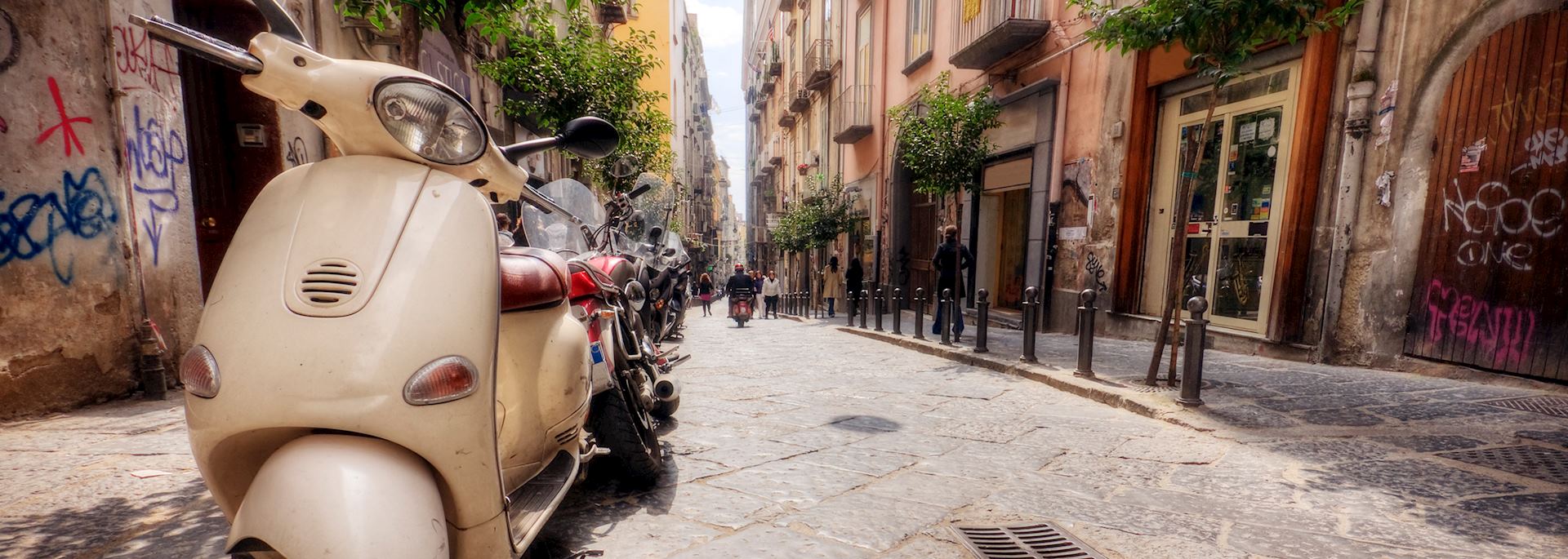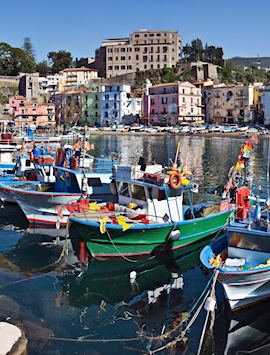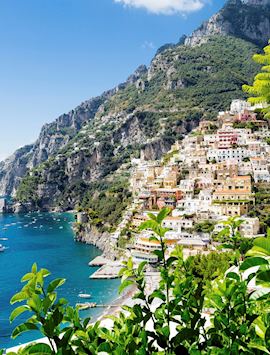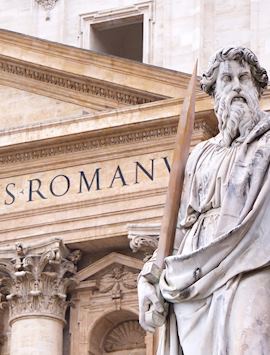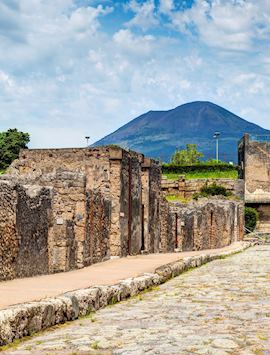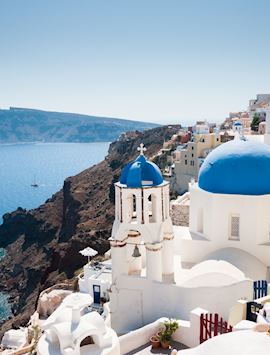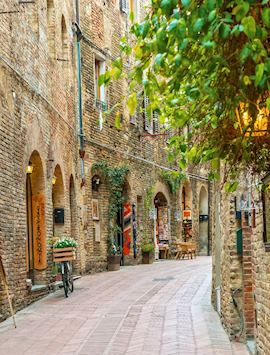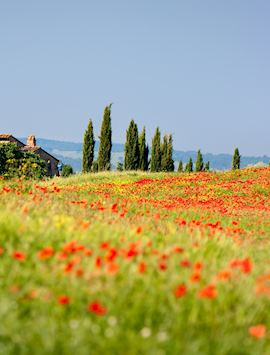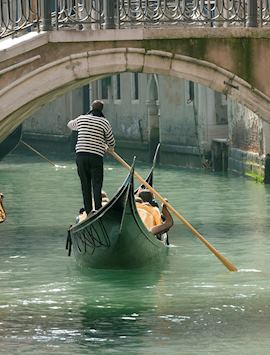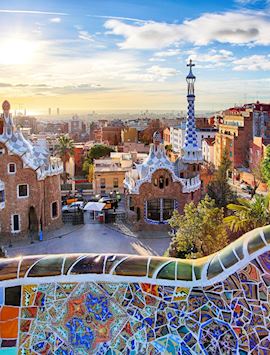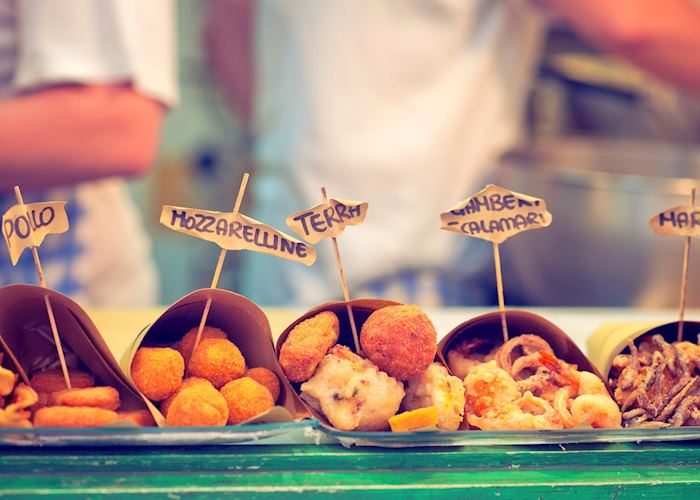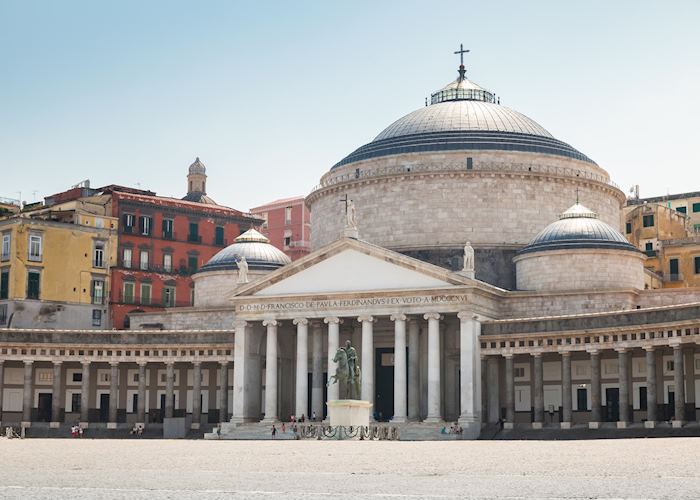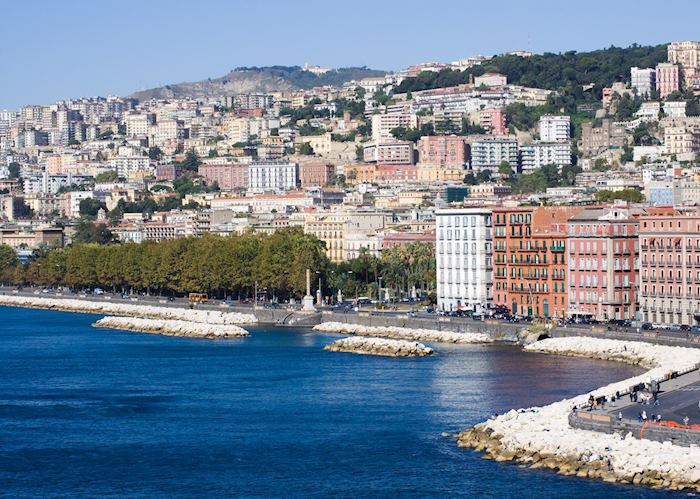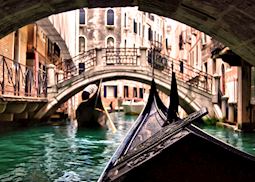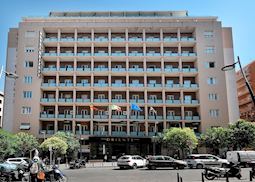Jump to:
Scratch under the surface of Naples' disorderly exterior and you'll discover a city full of charm that offers an authentic snapshot of southern Italian culture. The city's historic heart easily rivals that of Rome or Florence with grandiose squares, monumental baroque churches and prestigious museums. Its food is some of the most diverse and delicious in Italy, there's a thriving contemporary arts scene, a beautiful waterfront and many lively restaurant and bar areas. Despite all this, Naples receives refreshingly few visitors and if you tire of wandering its intriguing streets it's easy to hop on a train for Rome or make your way along the beautiful Amalfi Coast.
Italy specialist CarolineNaples is a slow burner: you've got to take the time to get to know it. If you do, you’ll find a pulsing, unpretentious and historic city, full of great food and street art.
Things to see and do in Naples
The Historic Heart or Centro Storico
Naples' historic core is based around one of Europe's most ancient cities which acted as an influential cultural hub for centuries. A wealth of historic buildings, from Roman theaters and catacombs to medieval cathedrals, Renaissance art museums and 18th-century palaces, line the streets and piazzas. Now protected as a UNESCO World Heritage Site, much of the historic area has been restored and a stroll around this district gives an overview of the long and complex history of the city. Don't miss the 13th-century San Domenico Maggiore Church, one of the city's most beautiful.
The Duomo
Naples' impressive cathedral sports a magnificent neo-Gothic façade which was added in the 19th century, but inside the structure dates largely from the 13th century. Its gilded ceiling, 4th-century mosaics, baroque paintings and elaborate 17th-century Cappella di San Gennaro make it one of the most significant sights in the old town. San Gennaro is Naples' patron saint and two phials of his blood are protected in his exuberant chapel. Three times a year they miraculously liquefy heralding good fortune for the city. If the miracle fails it is seen as an omen of looming disaster, a superstition borne out in 1944, the year of Vesuvius’ last eruption.
Cappella Sansevero
Tucked away down a little street in the historic core is this flamboyant 18th-century chapel remodeled by Raimondo di Sangro, a revered nobleman, writer, inventor and scientist of his time. The interior is blanketed in marble statues and vivid frescoes, the most impressive of which is the intricate ceiling depicting the Glory of Paradise. The chapel is also home to two of the most beautifully carved marble sculptures in Italy: the exquisite Veiled Christ masterfully sculpted from a single piece of marble and the equally impressive Veiled Modesty with its gossamer-like drapes.
Sampling pizza in Spaccanapoli
 Naples is one of Italy’s gastronomic heavyweights, combining a rich medley of Mediterranean influences with an abundance of fresh ingredients from sun-ripened vegetables to a wide variety of seafood. It is also generally recognized as the home of pizza, and no visit would be complete without sampling some of the local speciality alfresco on Spaccanapoli, the long narrow street that splits the old town in two. The classic Margherita was supposedly created with tomato, mozzarella and basil to match the Italian flag for a visit by the Queen consort of Italy in 1889.
Naples is one of Italy’s gastronomic heavyweights, combining a rich medley of Mediterranean influences with an abundance of fresh ingredients from sun-ripened vegetables to a wide variety of seafood. It is also generally recognized as the home of pizza, and no visit would be complete without sampling some of the local speciality alfresco on Spaccanapoli, the long narrow street that splits the old town in two. The classic Margherita was supposedly created with tomato, mozzarella and basil to match the Italian flag for a visit by the Queen consort of Italy in 1889.
Street art tour
Naples is home to some of Italy's best art galleries and museums. It is, however, also known for its impressive street art, which appears on walls all over the city in a diverse array of styles and techniques. The most famous piece is Banksy's 'Madonna with a pistol' on Piazza Gerolomini, but many other renowned local and international urban artists have created murals, stencils and inventive graffiti here. A street art walking tour introduces you to the finest works and gives a revealing insight into daily life as you wander through some of the lesser-visited areas of the city.
Museo Archeologico Nazionale (National Archaeological Museum)
Located in a cavalry barracks-turned-university building, the museum was founded by Bourbon king Ferdinand IV in the late 1700s to display his personal collection of antiquities. Today, it’s most famous for housing the spoils of Pompeii, relics taken from the ruins during excavations.
Pompeiian exhibits include everything from sophisticated cameo glass vases and frescoes depicting scenes from Greek myth to huge, intricate floor mosaics. More notoriously, there’s the collection of erotica — including a statue of an amorous Pan. It caused such embarrassment in the Bourbon era, it was displayed in the separate Gabinetto Segreto (Secret Cabinet).
If you’re planning to visit nearby Pompeii, a trip here first is highly recommended. The museum allows you to see the everyday objects and art that would have adorned the buildings: the ruins themselves, though fascinating, are hollow shells.
Teatro di San Carlo
Older than both Venice’s La Fenice and Milan’s La Scala, Naples’ opera house was inaugurated in 1737 by the then Bourbon king Charles III. Everything about its design — which has been preserved to this day — flaunted the Bourbons’ power: the grandiose colonnaded façade, the six tiers of seating and the tapestried royal box. It opened with an opera about Achilles (with a woman, Vittoria Tesi, in a trouser role as the eponymous hero).
In its long and tempestuous history, the San Carlo has inspired Mozart, been presided over by Rossini, and hosted virtuoso violinist Paganini. Today, it runs an annual opera and ballet season, for which tickets can be booked in advance.
Bourbon Tunnels
These subterranean labyrinths stretching some 200 km (124 miles) under Naples’ streets are like the dark underside of the Bourbon kings’ psyche. Fearing revolution after the political unrest that swept Europe in the 1840s, the Neapolitan King, Ferdinand II, began constructing an underground escape route linking the royal palace to the soldiers’ barracks and the sea.
His project was never completed, but the tunnels have become something of a chthonic time warp: on a visit, you can see where Neapolitans sheltered from air raids in World War II, scrawling messages of survival on the walls. Elsewhere, the tunnels are filled with the rusting remains of abandoned cars and scooters.
Art stations of the Naples Metro
In 1995, Naples let contemporary artists and architects loose on some of the stations of lines 1 and 6 in the city’s metro network. Their objective: to revamp the stations esthetically and to make them more comfortable spaces. The result is a series of stations that combines a mix of architectural styles with pieces of modern art. The Toledo Station, situated on one of Naples’ main shopping streets, is the most eye-catching. Its ceilings and walls are decorated in shades of blue, with light wells illuminating the 50 m (164 ft) deep station.
Lungomare
Naples can be boisterous and this 2.5 km (1.5 mile) seafront promenade is no exception. Lined with cafés and bars, it has a particularly lively atmosphere in the evenings. It’s worth visiting for the views alone, which take in the bay, Mount Vesuvius, grand villas and two castles, with Capri winking in the distance. You’ll see Neapolitan families taking part in the age-old tradition of the passeggiata (a sociable evening stroll) along the waterfront. Quad bikes are also available to hire.
who's been there
-
617-223-4521617-223-4395
- Make an inquiry
Suggested itineraries featuring Naples
Our itineraries will give you suggestions for what is possible when you travel in Naples, and they showcase routes we know work particularly well. Treat them as inspiration, because your trip will be created uniquely by one of our specialists.
Places near Naples
- Herculaneum 6 miles away
- Pompeii 15 miles away
- Sorrento 16 miles away
- Ischia 17 miles away
- Capri 20 miles away
- The Amalfi Coast 24 miles away
- Rome 118 miles away
- Matera 124 miles away
- Puglia 150 miles away
- Alberobello 157 miles away
- Fasano 163 miles away
- Orvieto 171 miles away
- Umbria 173 miles away
- Ostuni 175 miles away
- Assisi 176 miles away
- Perugia 185 miles away
- Palermo 194 miles away
- Lecce 209 miles away
- Erice and Trapani 213 miles away
- Sicily 214 miles away
- Taormina 214 miles away
- Mount Etna 217 miles away
- Siena 228 miles away
- Otranto 229 miles away
- Marsala 232 miles away
- Villa Romana del Casale 240 miles away
- San Gimignano 246 miles away
- Agrigento 247 miles away
- Costa Smeralda 249 miles away
- Florence 255 miles away
- Syracuse 266 miles away
- Ravenna 269 miles away
- Ragusa, Modica & Noto 272 miles away
- Sardinia 280 miles away
- Pisa 281 miles away
- Bologna 294 miles away
- Southern Sardinia 294 miles away
Photos of Naples
Our expert guides to exploring Naples
Written by our specialists from their own experiences of visiting Naples, these guides will help you make the most of your time there. We share both our practical recommendations and the best ways to appreciate Naples at its best.
-
Honeymoons in Italy ![Gondola ride, Venice]()
Honeymoons in Italy
Honeymoons in Italy
Having got married in Tuscany, specialist Eva outlines some of the best honeymoon options across Italy. Would you and your spouse-to-be prefer pampering on the Amalfi Coast or living la dolce vita in Venice, Rome and Florence?
Read this guide
Accommodation choices for Naples
We've selected a range of accommodation options for when you visit Naples. Our choices usually come recommended for their character, facilities and service or location. Our specialists always aim to suggest properties that match your preferences.
-
![Hotel Luna Convento, Amalfi]()
Grand Hotel Santa Lucia
Naples -
![Grand Hotel Oriente, Naples, Italy]()
Grand Hotel Oriente
Naples -
![Grand Hotel Vesuvio, Naples, Italy]()
Grand Hotel Vesuvio
Naples
Ideas for experiencing Naples
Our specialists seek out authentic ways to get to know the places that could feature in your trip. These activities reflect some of the experiences they've most enjoyed while visiting Naples, and which use the best local guides.
-
Historical walking tour & Cappella Sansevero ![Church of San Francesco di Paola, Naples Square]()
Historical walking tour & Cappella Sansevero
Historical walking tour & Cappella Sansevero
Take a private guided tour of Naples, admiring the architecture and, in particular, Giuseppe Sanmartino's marble statue, 'The Veiled Christ', regarded as a sculptural masterpiece.
View details
